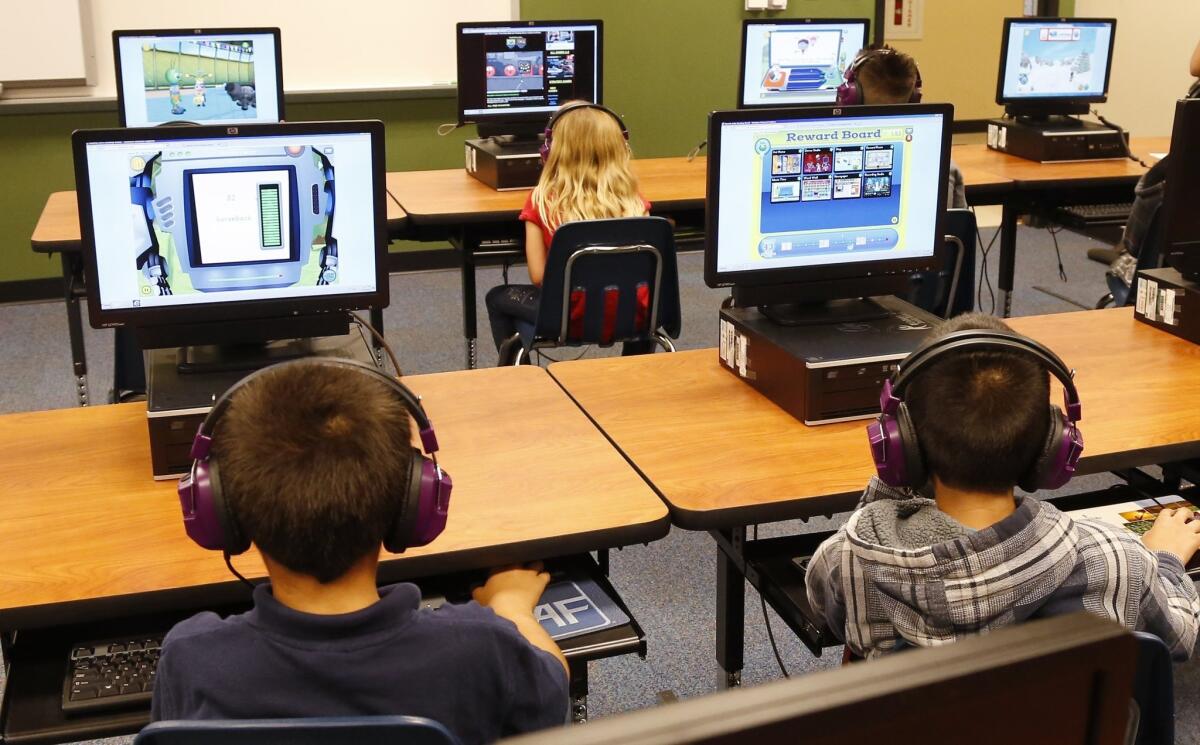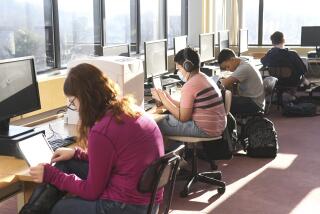Why do U.S. schoolchildren underperform academically compared with students in other countries?

- Share via
Every time the results of the international PISA test are released, the United States gets another opportunity to whip itself for students’ lackluster showing.
For those who are unfamiliar with it, PISA is the Program for International Student Assessment, a test administered to students in 79 countries around the world. It allows critics on both sides of the school-reform debate to peer at the results of other nations, compare them to the U.S. outcomes and find examples that appear to confirm their own beliefs about why our 15-year-olds are not at the top of the heap in science, math and reading.
Those opposed to standardized testing and accountability measures look at Finland’s high scores and point out that in that country, there are no mandatory standardized tests until the end of senior year of high school. Children are encouraged to play more. Their school days are shorter and no one attempts to hold teachers accountable according to a rigid rubric. The students are given very little homework. The nation’s scores and ranking have slid over the past decade, but it still consistently outshines the U.S.
Meanwhile, fans of charter schools and of more regular testing are likely to hold up Singapore and South Korea as models. Singapore’s curriculum is highly scripted and pretty much the same across the nation — something that the Obama administration hoped to emulate through its Common Core curriculum. Teachers continually prepare students for high-stakes tests and depend heavily on worksheets and drills. South Korean families depend heavily on private tutoring to help their children perform well on high-stakes tests. Students in these two countries also outperform American students on the PISA test.
But if Finland, Singapore and South Korea are all doing better than we are, that suggests there may be a factor at play other than how we teach. And indeed there is something that all three of these nations, and every other country that outranks the United States on the PISA test, have in common: lower rates of child poverty. And poverty is a major factor in how well students perform on the tests.
“Socio-economically disadvantaged students across OECD countries are almost three times more likely than advantaged students not to attain the baseline level of proficiency in science,” PISA reported in a 2018 paper.
Though the United States is by most measures a wealthy country, it is one with many poor people. A 2017 Unicef report looked at the relative child poverty rates of 41 well-off nations. That’s a measure of income inequality, in this case defined as the percent of children living in a household with an income of less than 60% of the median for that nation. The United States ranked seventh from the bottom.
A 2013 study by Stanford University researchers found that the U.S. would rank much higher on the PISA test if it weren’t for its higher levels of socioeconomic inequality.
“Because in every country, students at the bottom of the social class distribution perform worse than students higher in that distribution, U.S. average performance appears to be relatively low partly because we have so many more test takers from the bottom of the social class distribution,” the study concluded.
A 2016 analysis by the nonprofit organization Turnaround for Children, which studies the effects of various traumas on children, found that in U.S. schools where less than a fourth of students are poor enough qualify for free- and reduced-price lunches, scores are high enough to rank above the top nations.
There’s no getting around it: This is a shameful situation in a developed, wealthy nation. When poverty equates to lower academic performance, we perpetuate that poverty from one generation to the next. Until we are willing to face that problem and take bold measures against it, the nation’s rankings will always be limited.
This is not to let the education system off the hook. One way in which poverty affects educational attainment is that low-income students tend to attend schools with fewer resources and lower expectations. And there are countries where the poorest students fare better than that same group in the United States.
U.S. rankings actually improved somewhat in the new PISA results, with students scoring slightly above average among OECD nations in reading and science. But in math, the United States scored well below average for OECD nations.
For various reasons, PISA results aren’t the ultimate measure of how well a nation’s schools are doing. One example: There’s evidence that U.S. students are unmotivated to do well on the test, which has no impact on their grades or their futures. But when it comes to measuring the effects of income inequality, PISA offers a powerful lesson for the United States: If we want a better educated population, we cannot ignore the our culpability in allowing so many children to grow up in poverty.
More to Read
A cure for the common opinion
Get thought-provoking perspectives with our weekly newsletter.
You may occasionally receive promotional content from the Los Angeles Times.










